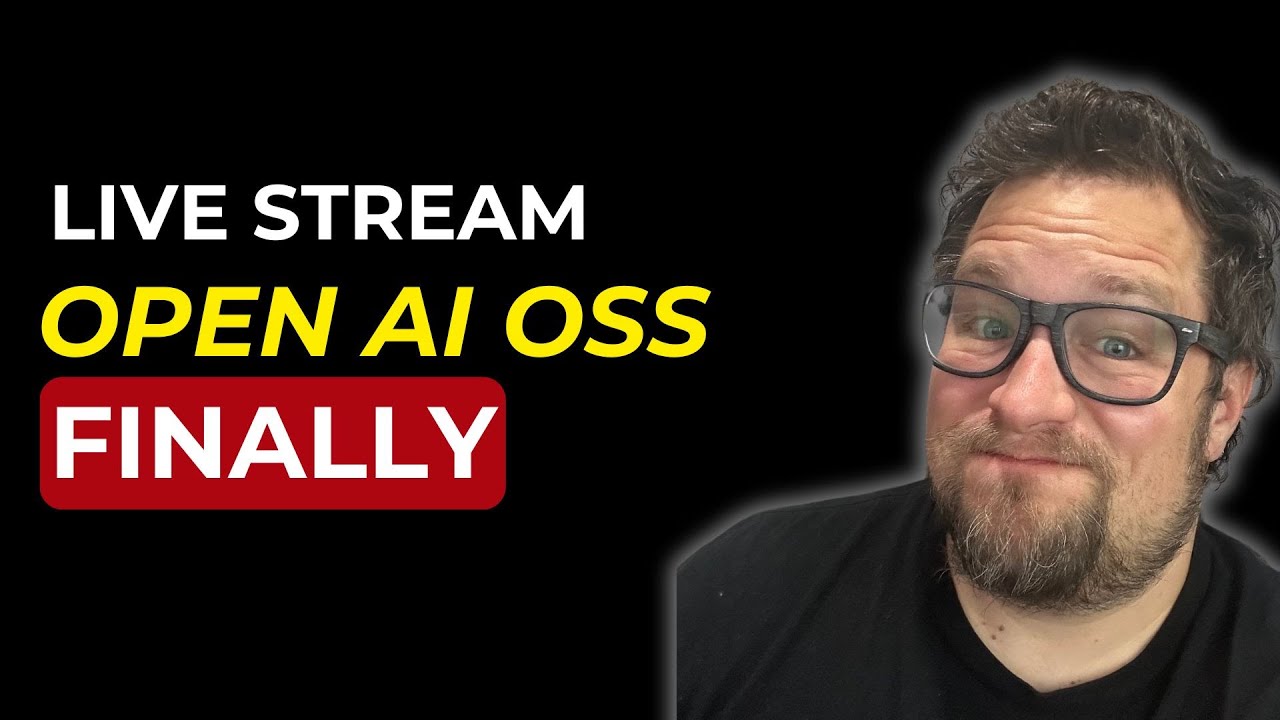The livestream provides an in-depth exploration of OpenAI’s newly open-sourced large AI models, highlighting their potential for local deployment and coding applications while also addressing challenges like performance limitations and coding accuracy. The host compares these models with other AI assistants, experiments with various configurations, and shares insights on their practical use, expressing optimism about future improvements and the evolving AI landscape.
In this extensive livestream, the host dives deep into testing and exploring OpenAI’s newly released open-source AI models, particularly focusing on the 20 billion and 120 billion parameter models. They discuss the excitement around being able to run these models locally on powerful GPUs like the RTX 5090, while also noting the challenges such as slower performance during streaming and high memory requirements that limit running the largest models locally. The host experiments with various configurations including flash attention and quantization settings, trying to optimize performance and context window sizes. Despite the enthusiasm, there is some disappointment expressed regarding the coding capabilities of these models, as they often struggle with complex coding tasks and tool calling, especially compared to other models like Quint 3 coder and Devstril.
The host also compares these OpenAI models with other AI coding assistants such as Opus 4.1, Horizon Beta, and Claude, highlighting their strengths and weaknesses. Opus 4.1, while visually impressive and capable of generating large amounts of code, is noted to be slow and expensive to run, with physics simulations and some coding tasks not performing well. Horizon Beta is praised for front-end styling and tool calling but is considered different from the OpenAI models, possibly being a GPT-5 mini or another proprietary model. The host frequently switches between these models to test various coding prompts, including games, physics simulations, and web projects, providing a hands-on perspective on their practical usability and limitations.
A significant portion of the stream is dedicated to testing specific coding challenges, such as creating a pool game with realistic physics and a cooperative sci-fi text game. The host shares insights into how these models handle complex logic, physics calculations, and multi-turn interactions, often finding that while some models can produce functional code, the quality and accuracy vary widely. They also explore the impact of temperature settings on model performance, noting that certain temperatures yield better results for coding tasks. The host expresses a desire to further tune these models and experiment with reasoning effort settings, which are not always supported in local deployments, to improve their coding effectiveness.
Beyond coding, the host touches on the broader AI landscape, discussing the potential for US-based companies to develop competitive coding models due to concerns around using Chinese models in sensitive industries. They also share personal anecdotes about their coding journey, the evolution of AI tools, and the excitement of integrating AI into workflows for tasks like meeting note analysis and project management. The stream includes community interactions, with viewers contributing prompts and questions, and the host demonstrating how AI can assist in real-world coding and creative projects, including games and UI design.
In conclusion, the livestream offers a comprehensive and candid exploration of OpenAI’s open-source models and their place within the current AI ecosystem. While the models show promise, especially with their large parameter sizes and local deployment capabilities, there remain challenges in coding accuracy, tool integration, and performance optimization. The host remains optimistic about the future, eager to continue experimenting and learning, and encourages viewers to engage with these technologies as they evolve. The session ends with reflections on the rapid advancements in AI, the importance of continuous learning, and the exciting opportunities ahead for developers and AI enthusiasts alike.
